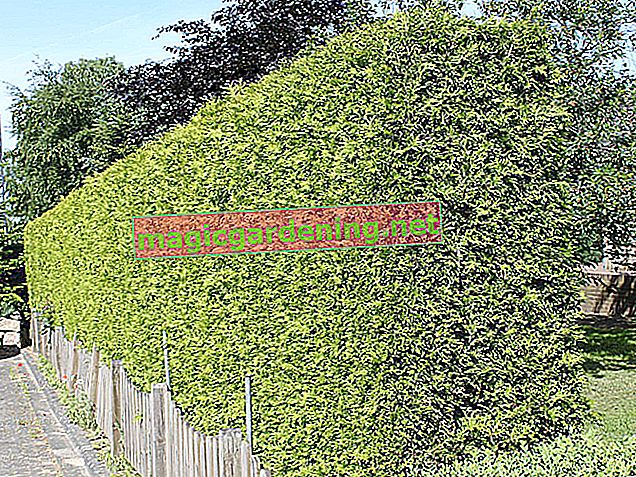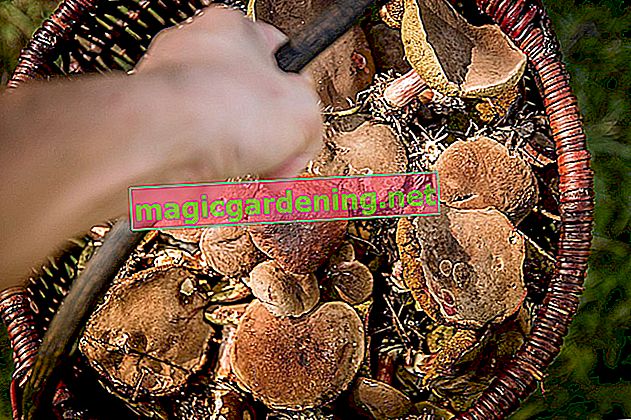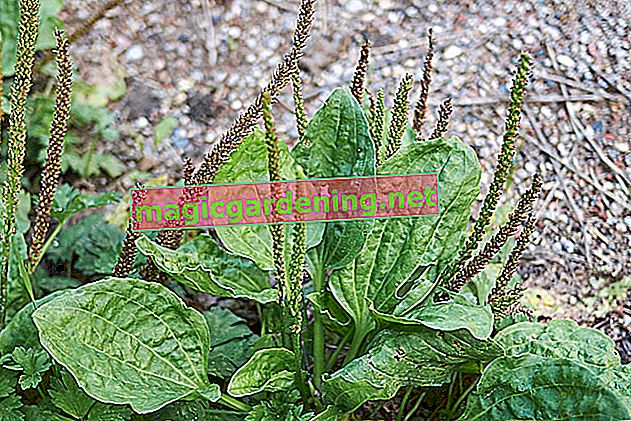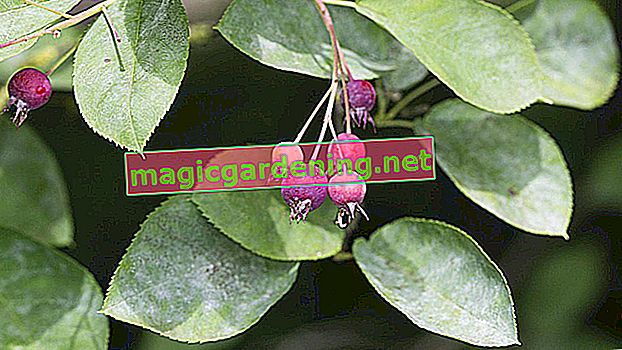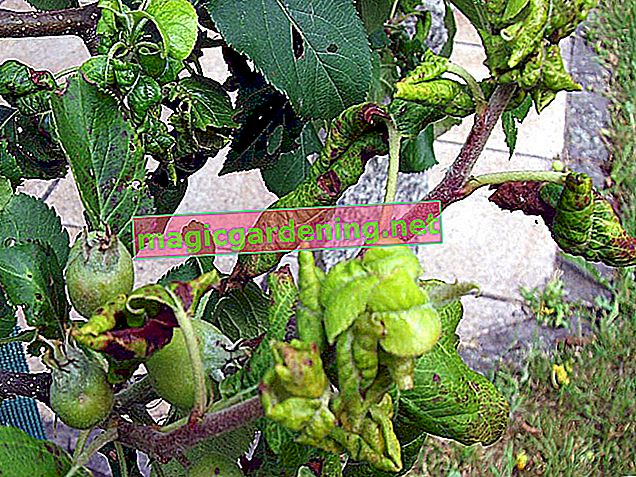
Aphids on the young shoots of the apple tree
In the apple tree, too, aphids suck the juice from the young shoots at the branch tips in spring and early summer. They can be fought mechanically by being washed off with a sharp jet of water from the garden hose. However, you should be careful with this method that the delicate leaves and flowers are not damaged. Nowadays, specialist retailers also offer control measures against aphids in the organic field. In this way, they can be targeted by introducing predators such as ladybugs on trees. You can also encourage these and other beneficial insects to settle in the garden by hanging a so-called insect hotel (€ 8.87 on Amazon *) as a breeding ground on a branch of the apple tree.
also read
- The apple tree loses its bark - identify and combat problems
- Identifying and fighting aphids on the apple tree
- Recognize powdery mildew on the apple tree
The codling moth
The codling moth is actually a butterfly from the moth family. The danger for the apple harvest comes from its caterpillars, which eat their way up a spiral passage to the core of the apples. Since the adult butterflies come from the air to lay their eggs, a glue ring around the trunk of the apple tree has no effect against this pest. However, control can take place by promoting beneficial insects and enemies of the codling moth. For example, hang an upside-down clay pot on a branch of the apple tree and stuff some wood wool into it. This creates the ideal breeding ground for the earwig, the natural enemy of the codling moth. The following insects are also useful for combating:
- Bed bugs
- the parasitic wasp Elodia tragica
- the parasitic wasp Trichomma enecator
Sitting and nesting options for birds also contribute to the control, as they like to eat the codling moth larvae.
The apple rust mite
According to its name, the apple rust mite creates rust-colored, circular spots on the leaves of the apple tree. These mites overwinter on the leaf buds and from spring on they attach themselves to the undersides of the freshly sprouted leaves. Chemical control with sulfur preparations should only be used in the event of a very massive infestation, as this can also affect beneficial organisms. Otherwise, infected leaves should be removed from the lower third of long shoots in June and disposed of accordingly. The material produced during winter pruning should also be burned or composted away from the apple trees in order to stop the mites.
The little frost wrench and its fight
The hibernating eggs of the little frost moth are deposited in cracks in the bark on the trunk of the apple tree. Since the caterpillars crawl up to the leaf buds to eat after hatching, they can be caught with a glue ring around the tree trunk. Since the female specimens of the frost moth are unable to fly and often strive up the tree where they hatch, they can also be caught with a glue ring before mating with the males in the treetop.
Tips & Tricks
A slight infestation with pests sometimes does not require the gardener to intervene, as it can be balanced by the beneficial insects in the garden within the framework of the biological balance. However, if the infestation increases sharply, appropriate countermeasures should be taken quickly so that diseases do not fundamentally damage the tree and harvest.



